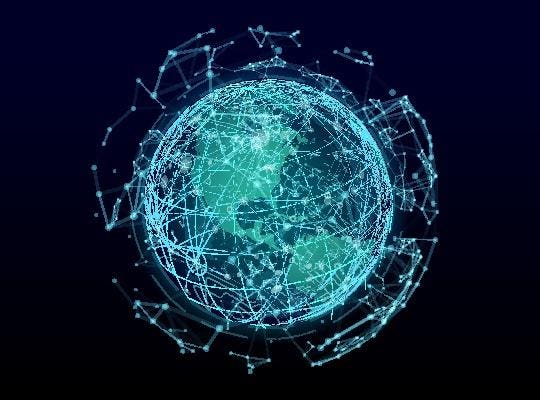Blockchain technology and digital assets are transforming how we operate as a society, interact with money and approach governance. This ecosystem has grown exponentially—from the advent of digital assets to blockchain-enabled innovations allowing greater access to capital, democratizing wealth and empowering information and asset ownership.
However, in 2022, a deteriorating macroenvironment and rising interest rates dampened investor appetite for risk assets. Additionally, several high-profile centralized collapses compromised trust in the digital asset industry.
Even in this challenging environment, many recognize these failures were not a reflection of the underlying technology, and the promise of decentralization hasn’t lost its luster. Instead, I believe the hard lessons learned will lay the foundation for more sustainable growth. Here are a couple of ways I expect blockchain and digital assets to continue to energize new financial paradigms in 2023 and beyond.
Areas With Underdeveloped Financial Markets Will See Accelerated Digital Asset Adoption
The U.S. has a highly developed, widely adopted financial system, and the U.S. dollar is the global reserve currency. These factors make the entrenched traditional system hard to disrupt. Conversely, regions with less developed financial systems and more volatile currencies may be more receptive to adopting digital assets. Moreover, centralized monetary networks have been feeling growing pains as developing nations face outsized devaluation and inflation.
As a result, there is an increasing sentiment that the future of money is digital—especially in countries that have experienced long-term hyperinflation. For example, Venezuela and Argentina saw year-over-year inflation rates of 114% and almost 79%, respectively, in 2022.
I believe areas with high unbanked or underbanked populations have a high potential rate of change; the less penetration of traditional financial institutions, the greater likelihood and speed of digital asset adoption. While some countries’ infrastructure deficiencies present hurdles to introducing technological advancements, we will likely see rapid growth in countries that can support digital asset initiatives. Namely, Colombia plans to create a digital currency to make “transactions easier for the consumer.”
The potential for digital assets to enable transactions with less friction and fewer fees may accelerate adoption in emerging markets. For example, international remittances are a critical lifeline for people in low- and middle-income countries. In 2022, remittances to these regions grew an estimated 5% to $626 billion, with remittances to Latin America and the Caribbean increasing 9.3% to $142 billion.
However, cross-border payments are mired by sluggish settlement times, onerous fees and commissions, and unfavorable exchange rates, which subtract an average of 6.3% from the payment. Comparatively, digital assets can facilitate nearly instantaneous value transfer with marginal costs, which could transform global remittances. Countries with low access to financial services, barriers to inclusion, distrust of centralized systems and high remittance costs will be prime contenders for digital asset adoption.
Projects With Concrete Utility Will Drive Sustained Digital Asset Adoption
2023 should see the emergence of more blockchain-native and traditional companies leveraging blockchain for projects with concrete utility that solve infrastructure and societal challenges. These applications will likely drive stickier adoption and meaningful engagement.
We are in a period similar to the early days of the internet when the frontier was mainly unproven, so skepticism was high. While most early internet companies dissolved, those that found product-market fit changed everything. Blockchain and digital asset projects that find the same could have a tremendous impact worldwide.
More large entities developing blockchain and digital asset initiatives will help restore trust and inspire confidence to create solutions with this resilient technology. For example, the Starbucks Odyssey program integrates non-fungible tokens with the company’s loyalty program. I believe more brand strategies for digital assets focused on consumer and brand loyalty will emerge, leading to the proliferation of similar initiatives.
Back To The Basics
The year ahead holds great potential for our industry. As we reflect on 2022, difficult events can help us refocus on blockchain technology’s core tenets—decentralization, transparency and immutability—to develop a new, more democratized financial paradigm.
Blockchain and digital assets were developed to address dwindling confidence in legacy trust centers and mitigate concerns about centralization within the financial system. While some projects focused on building innovations with integrity, transparency and trust, others were built hastily, driven by a desire to make fast money. And while this explosive development led to exciting ecosystem growth, much of it was in the areas of centralized exchanges and centralized counterparties, which couldn’t withstand stress tests.
Going back to the basics means applying the foundational principles to build robust infrastructure and meaningful projects that introduce tangible value propositions for wide-scale social improvement. If an industry innovates, but only a select group wins, that isn’t innovative at all. Additionally, engaging in thoughtful collaboration with regulators can bring clarity to innovation without stifling it.
The established and incoming participants that prioritize blockchain’s fundamentals and center accessibility for all will drive the next improved iteration of the ecosystem, long-lasting adoption and great outcomes for financial stability and economic growth.
The information presented is for general educational purposes, based upon publicly available sources believed to be reliable, but unverified. This communication is in no way a solicitation or an offer to sell securities or investment advisory services.

